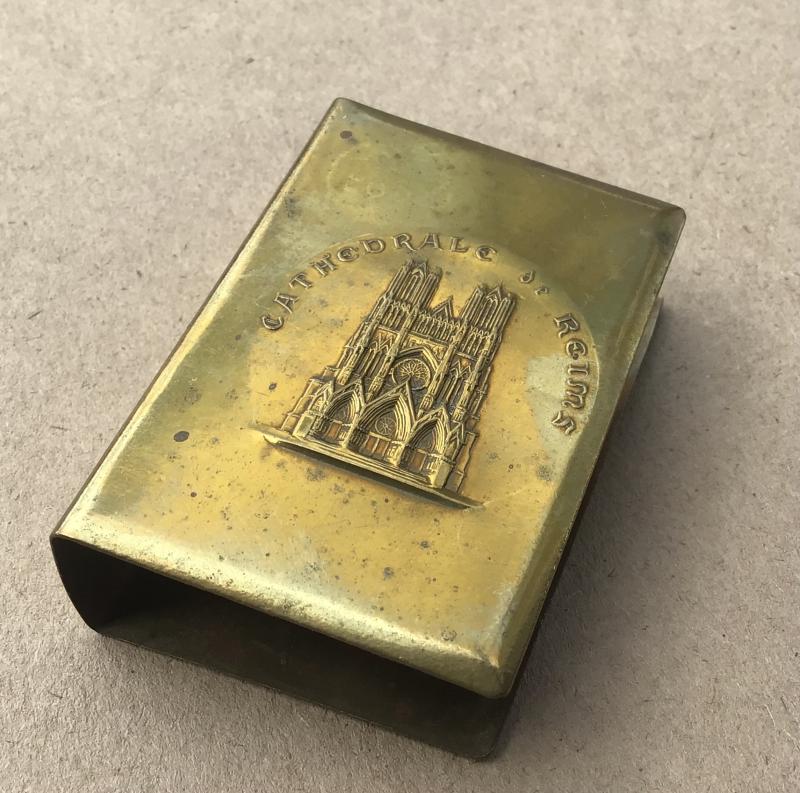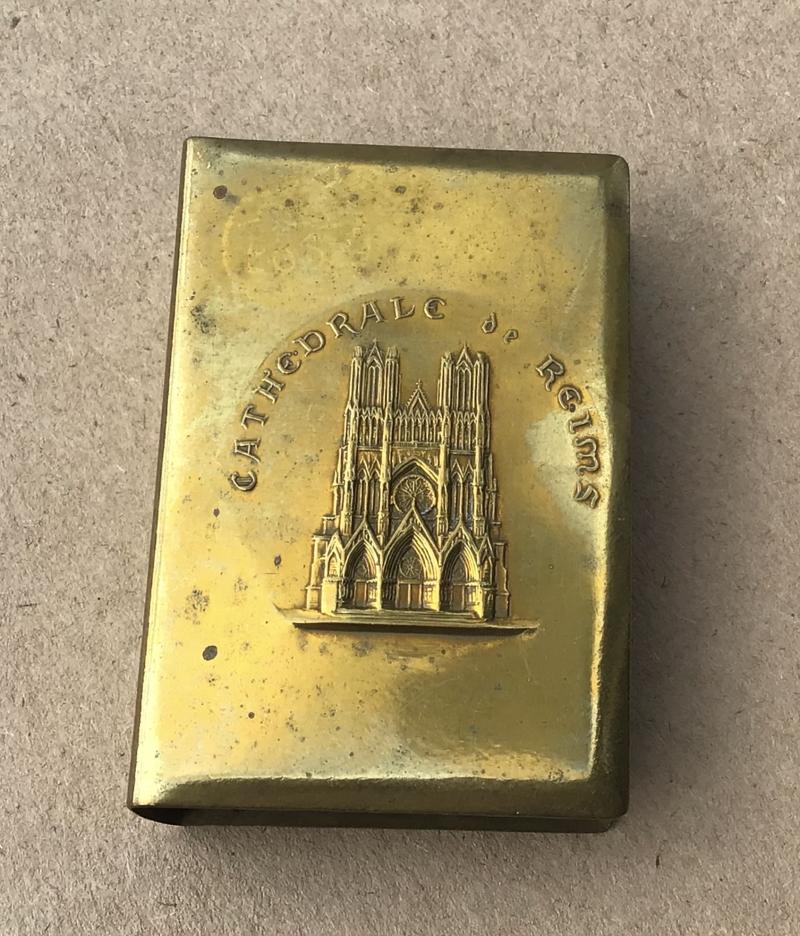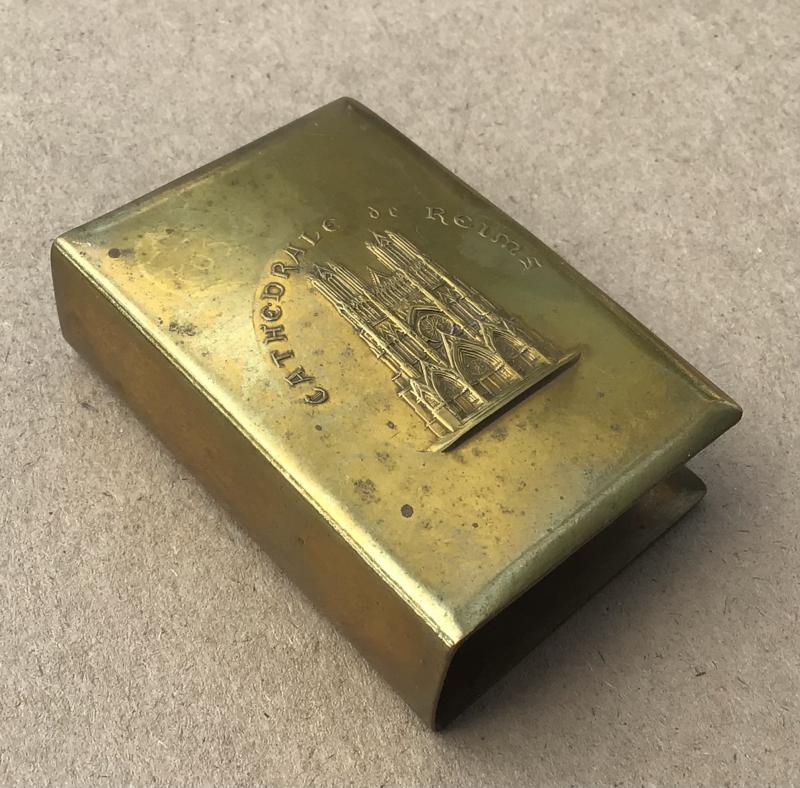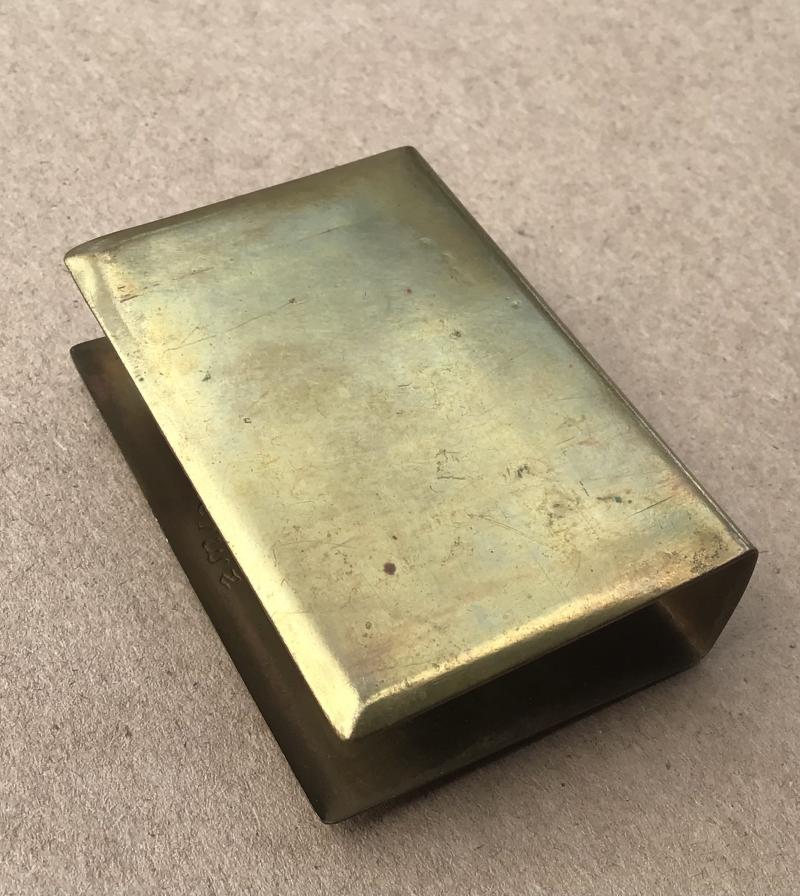WW1 Souvenir Brass Matchbox Holder
A commercially made die struck piece in brass featuring the Reims Cathedral.
On the outbreak of the First World War, the cathedral was commissioned as a hospital, and troops and arms were removed from its immediate vicinity. On 4 September 1914, the XII Saxon corps arrived at the city and later that day the Imperial German Army began shelling the city. The guns, located 7 km (4.3 mi) away in Les Mesneux, ceased firing when the XII Saxon Corps sent two officers and a city employee to ask them to stop shelling the city.
On 12 September, the occupying German Army decided to place their wounded in the cathedral over the protests of the Abbe Maurice Landrieux, and spread 15,000 bales of straw on the floor of the cathedral for this purpose. The next day French soldiers under General Franchet d'Esperey re-entered the city, but German wounded were left in the cathedral.
Six days later, a shell exploded in the bishop's palace, killing three and injuring 15. On 18 September a prolonged bombardment began and on the 19th shells struck the "forest" of wooden timbers under the lead-covered roof, setting it on fire, and completely destroying the roof. The bells melted, windows were blown out, and the sculpture and parts of the walls were damaged. The lead in the roofing melted and poured through the mouths of the stone gargoyles, damaging, in turn, the adjoining bishop's palace. Images of the cathedral in ruins were shown during the war by the indignant French, accusing the Germans of the deliberate destruction of buildings rich in national and cultural heritage, while German propaganda blamed the deaths of prisoners on the French, who at gunpoint prevented them fleeing the fire. Single shells continued to strike the ruined building for several years, despite repeated pleas by Pope Benedict XV.
At the end of the war, it was proposed to keep the cathedral in its damaged state as a monument to victims of the war, but this idea was finally rejected. A major restoration project began in 1919, led by Henri Deneux, chief architect of the service of French historic monuments. The restoration received major funding from the Rockefeller Foundation, and sometimes made use of modern techniques and materials, including prefabricated reinforced concrete, to strengthen the structure. In the 1920s, the foundations of the earlier church from the Carolingian period were discovered under the cathedral and excavated. The work was completed and the cathedral was reopened in 1938.
Code: 2625
85.00 AUD




